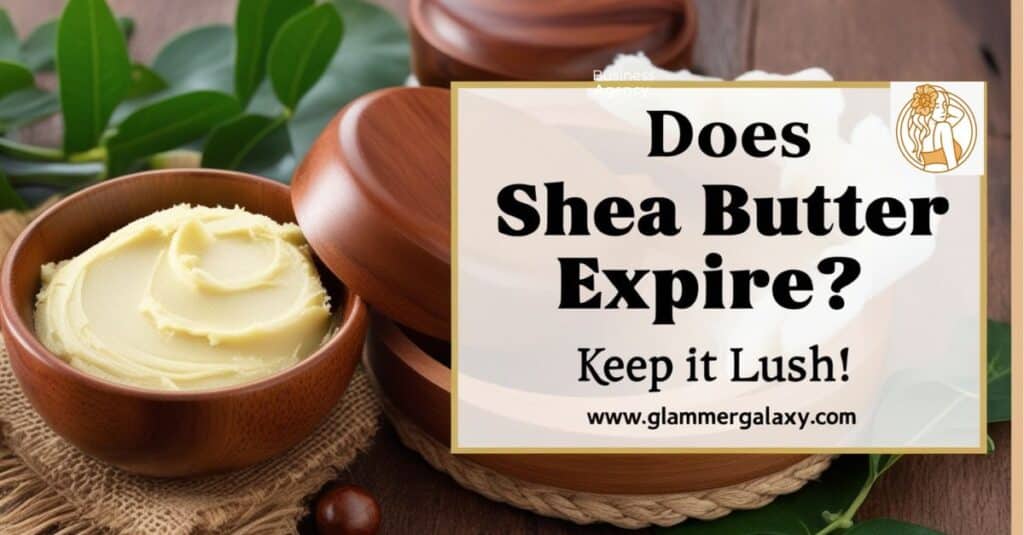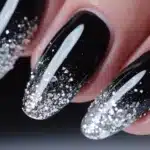In the world of natural skincare, few ingredients shine as brightly as shea butter. The most common question asked about it is “Does Shea Butter Expire”?
In this post we will explore shea butter as a natural moisturizer and uncover the secrets to maximizing its shelf life and benefits.
The Magic of Shea Butter: Nature’s Skin Savior
Shea butter isn’t just another trendy skincare ingredient. It’s a time-tested, multipurpose wonder that’s been used for generations to moisturize skin, soothe irritations, and even cook with in some cultures. But what makes it so special?
Composition of Shea Butter
Shea butter’s unique composition is what sets it apart from other natural moisturizers. Let’s break it down:
| Component | Percentage | Benefits |
| Oleic Acid | 40-60% | Enhances skin penetration, improves hydration |
| Stearic Acid | 20-50% | Provides a protective barrier, cleanses skin |
| Linoleic Acid | 3-11% | Anti-inflammatory, supports skin elasticity |
| Vitamin E | 0.1-0.3% | Antioxidant, protects against free radicals |
This unique blend of fatty acids and vitamins makes shea butter a powerhouse for:
- Deep hydration
- Reducing inflammation
- Boosting collagen production
- Protecting against environmental stressors
- Improving skin elasticity
- Soothing sunburns and minor skin irritations
“Shea butter is like nature’s own multivitamin for your skin. Its rich composition of fatty acids and vitamins nourishes the skin in ways that synthetic products simply can’t match.” – Dr. Sarah Johnson, Dermatologist
Historical Use of Shea Butter
Shea butter has a rich history dating back thousands of years. Ancient Egyptians used it for skin and hair protection in the harsh desert climate. In many African countries, it has been a staple for:
- Protecting newborns’ delicate skin
- Traditional healing practices
- Cooking and food preservation
- Waterproofing and protecting buildings
This long history of use speaks volumes about shea butter’s effectiveness and versatility.
Does Shea Butter Expire? The Shelf Life Conundrum
Now, let’s tackle the burning question: Does shea butter expire? The short answer is yes, but it’s not as straightforward as you might think.
Shea butter doesn’t have an expiration date in the traditional sense. Instead, it has a shelf life during which it maintains its optimal properties. Typically, high-quality shea butter can last 12-24 months when stored properly.
You might also like: Nail Polish on Ringworm
Factors Affecting Shea Butter’s Longevity
Several factors play a role in determining how long your shea butter will stay fresh:
- Processing methods: Raw, unrefined shea butter generally lasts longer than refined versions. The natural antioxidants present in unrefined butter help protect it from oxidation.
- Storage conditions: Temperature, light exposure, and humidity all play a role. Ideal storage conditions can significantly extend shelf life.
- Environmental factors: Contaminants and air exposure can speed up degradation. Keeping your shea butter clean and well-sealed is crucial.
- Quality of the original product: High-grade shea butter from reputable sources tends to have a longer shelf life due to better harvesting and processing practices.
- Additives and preservatives: Some commercial products add synthetic preservatives to extend shelf life, but this can alter the natural properties of the butter.
The Science of Shea Butter Degradation
Understanding why shea butter degrades can help us better preserve it:
- Oxidation: When exposed to air, the unsaturated fats in shea butter react with oxygen, leading to rancidity.
- Hydrolysis: If moisture gets into the butter, it can cause the fats to break down, altering texture and effectiveness.
- Microbial growth: While rare due to shea butter’s natural antimicrobial properties, contamination can occur if not handled properly.
Telltale Signs Your Shea Butter Has Gone Bad
How do you know if your trusty jar of shea butter has turned from a skin-saving superhero to a rancid villain? Here are the key indicators:
1. The Nose Knows: Detecting Rancidity
Fresh shea butter has a mild, nutty aroma. If you catch a whiff of something sour, cheesy, or off-putting, it’s likely your butter has gone rancid. This change in smell is due to the oxidation of fatty acids.
Tip: Always smell the butter when you first open it to get familiar with its natural scent. That way, it’s easier to detect any changes over time.
2. Visual Cues: Color Changes and Separation
- Color: Fresh shea butter ranges from ivory to pale yellow. If it turns significantly darker or develops grey or green spots, it’s time to say goodbye.
- Separation: If you notice oil pooling on the surface, it’s a sign that the butter’s structure is breaking down.
| Condition | Color |
| Fresh Shea Butter | Ivory to Pale Yellow |
| Expired Shea Butter | Gray, Brown, or with Dark Spots |
Tip: Avoid storing shea butter in transparent containers that allow light to enter. Opt for opaque jars or tins to preserve the butter’s color.
3. Texture Transformation: From Smooth to Grainy
Quality shea butter should be smooth and creamy. If it becomes grainy or develops a gritty texture, it’s losing its integrity. This graininess occurs when the fat molecules realign due to temperature fluctuations.
4. Container Integrity: Leaks and Contamination
Check your container for any signs of damage or leakage. Compromised packaging can lead to contamination and faster spoilage. Look for:
- Cracks in plastic containers
- Rust on metal tins
- Loose lids or seals
5. The Impact of Oxidation
Oxidation is the enemy of shea butter’s beneficial properties. As it oxidizes, shea butter loses its:
- Moisturizing ability
- Anti-inflammatory properties
- Healing capabilities
- Antioxidant benefits
“The moment shea butter starts to oxidize, it’s like a countdown clock for its effectiveness. Every day it’s exposed to air, light, and heat, it loses a bit of its skincare magic.” – Emma Lee, Cosmetic Chemist
Maximizing Shea Butter’s Shelf Life: 9 Pro Tips
Want to keep your shea butter fresh and effective for as long as possible? Follow these expert tips:
- Temperature control: Store between 59-77°F (15-25°C) for optimal freshness. Avoid extreme temperature fluctuations.
- Moisture management: Keep your butter dry to prevent mold growth. Use a clean, dry spoon or spatula to scoop out product.
- Hygiene habits: Always use clean, dry hands or a spatula. Introducing bacteria can speed up degradation.
- Natural preservatives: Add a few drops of vitamin E oil or rosemary extract. These natural antioxidants can help extend shelf life.
- Packaging prowess: Use airtight, opaque containers to protect from light and air. Dark glass jars or aluminum tins are ideal.
- Portion control: Scoop out only what you need to minimize exposure to air and contaminants.
- Quality matters: Invest in high-grade, unrefined shea butter for longer shelf life. The higher quality, the more resilient it is to degradation.
- UV protection: Store away from direct sunlight to prevent oxidation. UV light can break down the beneficial compounds in shea butter.
- Refrigeration: For long-term storage, refrigerate in an airtight container. This can significantly extend shelf life, but remember to let it come to room temperature before use.
The Refrigeration Debate
While refrigeration can extend shelf life, it’s not always necessary or beneficial for everyone. Here’s a quick pros and cons list:
Pros of Refrigeration:
- Extends shelf life significantly
- Prevents melting in hot climates
- Slows down oxidation process
Cons of Refrigeration:
- Can make the butter too hard to use immediately
- May cause slight graininess (easily fixed by warming)
- Takes up space in your fridge
The decision to refrigerate often depends on your climate, usage frequency, and personal preference.
The Afterlife of Expired Shea Butter
Found yourself with expired shea butter? Don’t toss it just yet! Here are some creative ways to repurpose it:
- Leather conditioner: Great for shoes and bags. The fats in shea butter can help soften and protect leather.
- Wood polish: Nourishes and protects wooden surfaces. It can help restore shine to dull wood.
- Hair mask: For deep conditioning (if not too rancid). Shea butter can help moisturize dry, brittle hair.
- Gardening aid: Mix with soil to retain moisture. It can help nourish plants and improve soil quality.
- Lubricant for tools: Use it to prevent rust on garden tools or other metal objects.
- Soap making: Even slightly off shea butter can be used in soap making, as the saponification process can mask minor rancidity.
- Candle making: Incorporate it into homemade candles for added moisturizing benefits when the candle melts.
Remember, while these uses are great for slightly old shea butter, avoid using rancid butter on your skin or hair.
See also : Toner Turned My Blonde Hair Brown – Causes and Solutions
Shea Butter Storage Solutions: Keeping It Lush
Proper storage is crucial for extending the shelf life of shea butter. Let’s explore the best methods in more detail:
Room Temperature Storage
For most people, room temperature storage is sufficient if you use your shea butter regularly. Here’s how to do it right:
- Use a cool, dark cupboard away from heat sources
- Keep away from direct sunlight and humid areas like bathrooms
- Ideal for short-term storage (3-6 months)
- Use dark glass or opaque containers to minimize light exposure
Refrigeration Pros and Cons
For longer-term storage or in hot climates, refrigeration can be beneficial:
Pros:
- Extends shelf life significantly (up to 12-18 months)
- Prevents melting in hot climates
- Slows down oxidation process
Cons:
- Can make the butter too hard to use immediately
- May cause slight graininess (easily fixed by warming)
- Takes up space in your fridge
If you choose to refrigerate:
- Use an airtight container to prevent moisture and odors
- Allow butter to come to room temperature before use
- Avoid frequent temperature changes
Freezing Shea Butter: Is It Worth It?
For long-term storage (up to 2 years), freezing is an option. However, it comes with its own set of considerations:
- Thaw slowly at room temperature to prevent texture changes
- May alter texture slightly, but this can be fixed by gentle heating and stirring
- Best for bulk storage or infrequent use
- Use freezer-safe, airtight containers to prevent freezer burn
Travel-Friendly Storage Hacks
For those who love to take their shea butter on the go:
- Use small, airtight containers to minimize exposure
- Opt for solid butter over whipped versions for less mess
- Consider shea butter sticks for mess-free application
- Keep it in a cool, dry place in your luggage
- For air travel, remember TSA liquid restrictions and pack accordingly
The Science Behind Shea Butter Preservation
Understanding the chemistry of shea butter can help us preserve it better:
Fatty Acid Composition
Shea butter’s unique fatty acid profile contributes to both its benefits and its shelf life:
- Oleic acid (40-60%): Prone to oxidation, but also key for skin benefits. It enhances penetration and moisturization.
- Stearic acid (20-50%): More stable, contributes to shea’s solid texture. It helps create a protective barrier on the skin.
- Linoleic acid (3-11%): Essential fatty acid that supports skin health but is prone to oxidation.
- Palmitic acid (3-7%): Helps stabilize the butter and contributes to its texture.
Antioxidants: Nature’s Preservatives
Shea butter contains natural antioxidants that fight oxidation, extending the butter’s shelf life:
- Vitamin E (tocopherols)
- Catechins
- Polyphenols
- Triterpenes
These compounds not only preserve the butter but also contribute to its skin benefits.
.Explore this interesting article: Can I Use Eyeliner On My Lips?
The Role of Processing
The way shea butter is processed significantly impacts its shelf life and properties:
| Processing Method | Shelf Life | Benefit Retention |
| Raw, unrefined | 12-24 months | Highest |
| Cold-pressed | 12-18 months | High |
| Refined | 6-12 months | Moderate |
Unrefined shea butter retains more of its natural antioxidants and beneficial compounds, contributing to a longer shelf life and more potent skincare benefits.
Sustainable Shea: From Tree to Jar
The journey of shea butter from the African savanna to your skincare routine is fascinating and important for its quality and ethics.
Ethical Sourcing and Quality
- Fair trade practices ensure better quality and support local communities
- Sustainable harvesting maintains the health of shea trees and ecosystems
- Women’s empowerment is often a key component of shea butter production
Environmental Footprint
- Low-impact harvesting methods preserve natural habitats
- Minimal processing reduces carbon footprint
- Biodegradable and eco-friendly product
- Shea trees aid in preventing desertification in the Sahel region
Supporting Fair Trade Shea Butter
By choosing fair trade shea butter, you’re:
- Supporting women’s cooperatives in West Africa
- Ensuring sustainable harvesting practices
- Getting a higher quality product
- Contributing to economic development in rural areas
Case Study: The Shea Butter Revolution in Ghana
In Ghana, the shea butter industry has transformed lives:
- 16 million women employed in the shea sector
- 400,000 tons of shea kernels exported annually
- 30% increase in household income for shea producers
- Improved access to education and healthcare in shea-producing communities
This success story showcases the power of sustainable, ethical shea butter production. It demonstrates how proper care and harvesting of shea butter not only benefits consumers but also has far-reaching positive impacts on communities and ecosystems.
Embracing the Golden Rules of Shea Butter Care
As we wrap up our journey through the world of shea butter, let’s recap the key strategies for keeping your natural moisturizer in prime condition:
- Store in a cool, dark place to prevent oxidation
- Use clean tools for application to avoid contamination
- Choose high-quality, unrefined butter for maximum benefits and longevity
- Monitor for signs of rancidity regularly
- Incorporate into your skincare routine regularly to enjoy its full benefits
- Consider refrigeration for long-term storage or in hot climates
- Use within 12-24 months for optimal effectiveness
- Support sustainable and ethical shea butter production
Remember, proper care not only extends the shelf life of shea butter but also ensures you’re getting the maximum skincare benefits from this natural wonder.
“Shea butter isn’t just a product; it’s a connection to centuries of African beauty wisdom. When we care for it properly, we honor that heritage and maximize its incredible benefits.” – Ama Owusu, Ghanaian Shea Butter Producer
By understanding and respecting the nature of shea butter, we can harness its full potential for hydration, healing, and natural beauty. Whether you’re battling dry skin, soothing eczema, or simply indulging in a luxurious skincare routine, properly stored and cared-for shea butter is your ally.
Watch this video to know more about types of shea butter :
Common Questions Regarding Shea Butter:
Let’s address some common queries about shea butter’s shelf life and storage:
Q: How long does shea butter last?
A: Typically 12-24 months when stored properly. Unrefined, high-quality butter tends to last longer.
Q: Is it safe to mix old and new shea butter?
A: It’s best to keep them separate to avoid contaminating fresh butter. Mixing can reduce the overall quality and shelf life.
Q: Can I add essential oils to my shea butter to extend its life?
A: Some essential oils have preservative properties, but they can also introduce moisture. Use caution and research specific oils before adding.
Q: Does the color of shea butter indicate its freshness?
A: Not necessarily. Color can vary from ivory to yellow naturally. Significant darkening or grey/green tints, however, can indicate spoilage.
Final Thoughts on Shea Butter Care
As we’ve explored, shea butter is more than just a moisturizer – it’s a testament to nature’s power and traditional wisdom. By taking the time to store and use it properly, we not only extend its shelf life but also maximize its potential to nourish and heal our skin.
Remember that while shelf life is important, the real value of shea butter lies in its regular use. Don’t let the fear of expiration keep you from enjoying this natural wonder. With proper care, your shea butter will remain a lush, effective part of your skincare arsenal for months to come.

Sarah Williams is an experienced blogger and fashion enthusiast at Glammer Galaxy. With a passion for beauty and style, she shares expert insights on hair trends, nail art, and fashion tips. Her creative flair and years of experience make her a go-to source for all things glam!







